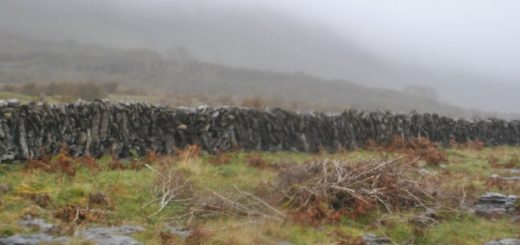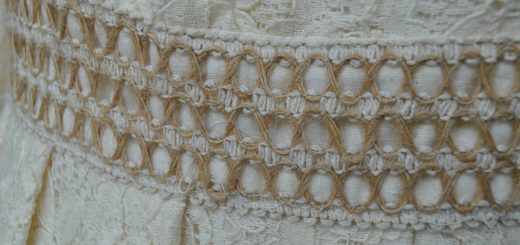Inaccessible Sustainability
As the United States portion of my internship comes to a close, I have been thinking often about one theme we saw throughout our visits to different stores around the Pacific Northwest: sustainably crafted fashion is not something that is widely accessible to the masses in this day in age. We found that clothing companies that offered ‘alternative designs’ were using cheap, plastic-based materials coated with chemical dyes. The designs that are exhibited through these festival type clothing stores are often whimsical and inspired, however, they are not crafted to last and are certainly not designed with environmental and social impacts in mind – rather just to look like they are. On the opposite end of the spectrum, we found that those shops that do craft clothing using all natural materials and plant based dyes to have incredibly simple patterns and outrageously inaccessible pricing. The designs of which are incredibly plain, which seems to make a statement regarding the amount of money that one is capable of spending on something as dull as a plain linen top. So that begs the question, is sustainably overpriced statement clothing really sustainable at all? Is there a way to stop the gentrification of clothing that doesn’t abuse laborers and pollute?
Whilst reading ‘Sustainable Fashion: Past, Present, Future’ by Jennifer Farley Gordon and Colleen Hill, I came across a concept that I believe sums up the solution to our problem of modern fast fashion as well as the inaccessibility of slow fashion. “The fashion industry has undergone a metamorphosis over the past 300 years – and it continues to evolve rapidly. Fueled by technological advancements, changes in the way clothing is manufactured and consumed have likewise transformed our perceptions of how contemporary fashion should be valued. Today, many consumers can afford to buy hundreds of garments per year, should they choose to shop in the countless trend-driven stores specializing in low-priced, “disposable” clothes. In the frenzy to buy the latest look, however, few shoppers stop to consider the full life cycle of the clothes they purchase – and not just where and how the clothes were made, but what will become of them after they are worn a few times and discarded” (p. 31) The book goes on to describe how recently the metamorphosis into disposable fashion truly came to be, and highlights the way of clothing prior to the industrial revolution. Before the mechanization of sewing and fabric-making, the purchase of a new garment was a significant expenditure. Because of this, each piece of clothing was made for maximum efficiency and durability. Oftentimes people had no more than a few garments at a time, many of which are still intact today, attesting to the true sustainability of design at the time – a concept that I believe could be pivotal in the true sustainability of the fashion industry.
As with any aspect of sustainability, a shift in consciousness of the consumer is required in order to truly revolutionize the industry. However, I believe that businesses are equally, if not more, responsible for the catalyst of that shift. During my exploration into companies that claim the title ‘slow fashion,’ I came across a company by the name of Crossfox that is a prime example of the ways I believe the industry to be doing arguably more harm than good. This brand uses the alternative-look to market their ‘uniquely handmade items.’ They use bamboo and hemp materials to add the element of sustainability, but the deep colors they achieve on their garments leaves one questioning whether or not they are using chemical dyes to achieve the tones that you see in their pieces. The most harmful part of the brand’s business model, in my opinion, is the prices they charge. Leggings are $145 a piece and fleece hoodies a staggering $275. The profit margin that this company sees is a great business model in theory, but creating a product that is only practical for a small number of people to purchase is not helping the overall sustainability movement at all. Associating “slow fashion” with economic prestige is nothing more than a faster way to drive the movement into the ground and out of the grip of the masses.
There are a few concepts that I believe those companies which call themselves sustainable should employ in order to live up to their mission. First, designing looks that are both expressive and durable as well as a practical purchase for people without a huge amount of disposable income. Celtic Fusion does a noteworthy job of this through the use of all-natural materials and an attractive design while making prices accessible, but still an investment that leaves you to want to get the most wear out of the garment. Another key-factor of true sustainability in fashion is education. Many slow fashion companies make broad statements about their sustainability, but lack explanation about just what kind of positive impact their choices as a company are making. I have a hunch that this is because making a livable profit from true sustainability is difficult, if not impossible, however I believe transparency about where a business stands currently as well as where it is going to be a crucial part in helping to both convince consumers of the importance of their purchase as well as to educate them for the future.
Over the course of my internship with Celtic Fusion, I will be doing research into the impact that Regina makes with her choices to use all-natural materials, no chemical dyes, and fair trade labor practices and compiling them into both a page on her website as well as a handout for her booth at the Christmas market we will be vending at. I will also be looking into the ways in which her sustainability could be improved and compiling a list of goals that are achievable for her company to be as environmentally and socially conscious as possible. I expect that my impressions of the industry will evolve over the course of my research, so I will be revisiting this concept at the end of my time with Celtic Fusion.


